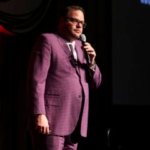Recently, I was involved in analyzing attendance demographics for an organization. The x-axis of the graph displayed age ranges, each one spanning about a decade (under 25, 26–35, 36–45, etc.). The y-axis charted the number of participants in each age group.
In this organization’s case, the graph was heavily weighted to the right (as in, “graying” attendees). The discussion then advanced to the million-dollar question: What will the demographic picture ideally look like five years from now? A number of people at this association thought the ages should be evenly distributed. Others argued in favor of a bell-shaped curve — high in the middle and lower on either side of the curve.
I sided with the bell. Why? While your demographic situation may be different, I’m a firm believer that in order to win the next-gen conference participant, you must own the mid-career-professional category. Offering student discounts, travel grants, and experiences and tactics — including featuring Millennials on the conference program — just isn’t converting a high-enough percentage of younger attendees for many professional conferences. Early-career professionals want to go to the conferences that their mid-career co-workers find useful. They want to fast-track their career success, and will mimic those they respect and trust.
While you work on growing your mid-career fan base, here are four education- and experience-design principles that will serve all segments well.
1. New, Advanced, or High-Tech Content
Get rid of all introductory or 101 content at your premium conferences. Reserve that approach for workshops, webinars, and other professional-development mediums. It’s very rare to see “session was over my head” in the post-session survey comments. Instead, you’ll often see attendees complain that the session was too basic. Challenging is good — even for newbies.
2. More Practitioners, Less Academia
Conference programs, especially in the STEM space, are traditionally loaded with very young or much older speakers. This throws off your demographics and can actually turn off mid-career practitioners, as well as exhibitors and sponsors. Fixing this usually requires going on a session diet and embracing a quality-over-quantity education direction. If your conference has posters, retain that strategy as a way for attendees to justify their attendance.
3. Participatory, Not Sit and Get
Education session leaders must embrace learning design — what the participants will do during the session. Periodic activities throughout the session that encourage participants to work through how they will apply the content must be part of your format.
4. Mingle-Up
Early-career professionals want to rub elbows with those they aspire to be like. If the professionals they seek are inaccessible — in committee meetings or cliques — they will be frustrated. Your conference community must be welcoming and have limited competing priorities.



